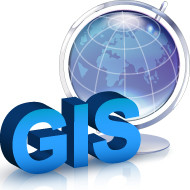
Geographic information system (GIS) began in the 1960s. Its primary objective is to process spatial data, and is a comprehensive discipline that integrates geography and cartography. Natural, social humanity, political, and economical spatial data all can be intergrated with GIS.
Taiwan’s GIS development began in the 1980s. Initially, Taiwan’s GIS market is focused on professional users. Users were mostly from government agencies and academia, and were mainly used in surveying, mapping, and environmental resource fields. However, the rapid development of technology and the rise of networks drove GIS growth. This made GIS applications become commonplace. Today GIS can be applied to anything related to spatial information management.
In recent years, GIS has developed into a brand new cloud geographic information system (cloud GIS), which is applied to WebGIS service to search, gather, store, analyze spatial information, and design a system with location-based system. This is widely used in civil engineering, natural habitat preservation, disaster prevention and relief, urban management, route selection, traffic management, and regional development, etc. All these fields can use GIS technology to assist management and analysis. It is because GIS has powerful spatial analysis abilities which could be intergrated with GPS and database management, this can facilitate business development related to spatial data, and achieve a more effective and reasonable decision.
Moving GIS to cloud allows GIS to use cloud service and online systems to process overlay and spatial analysis function. This changes the original geographical data into information that can help decision-making, and use the system to transmit the information to various media devices. Network platforms can convert information into everyday life tools, allowing easy use with PCs, tablet PCs, smart phone, and other devices.








